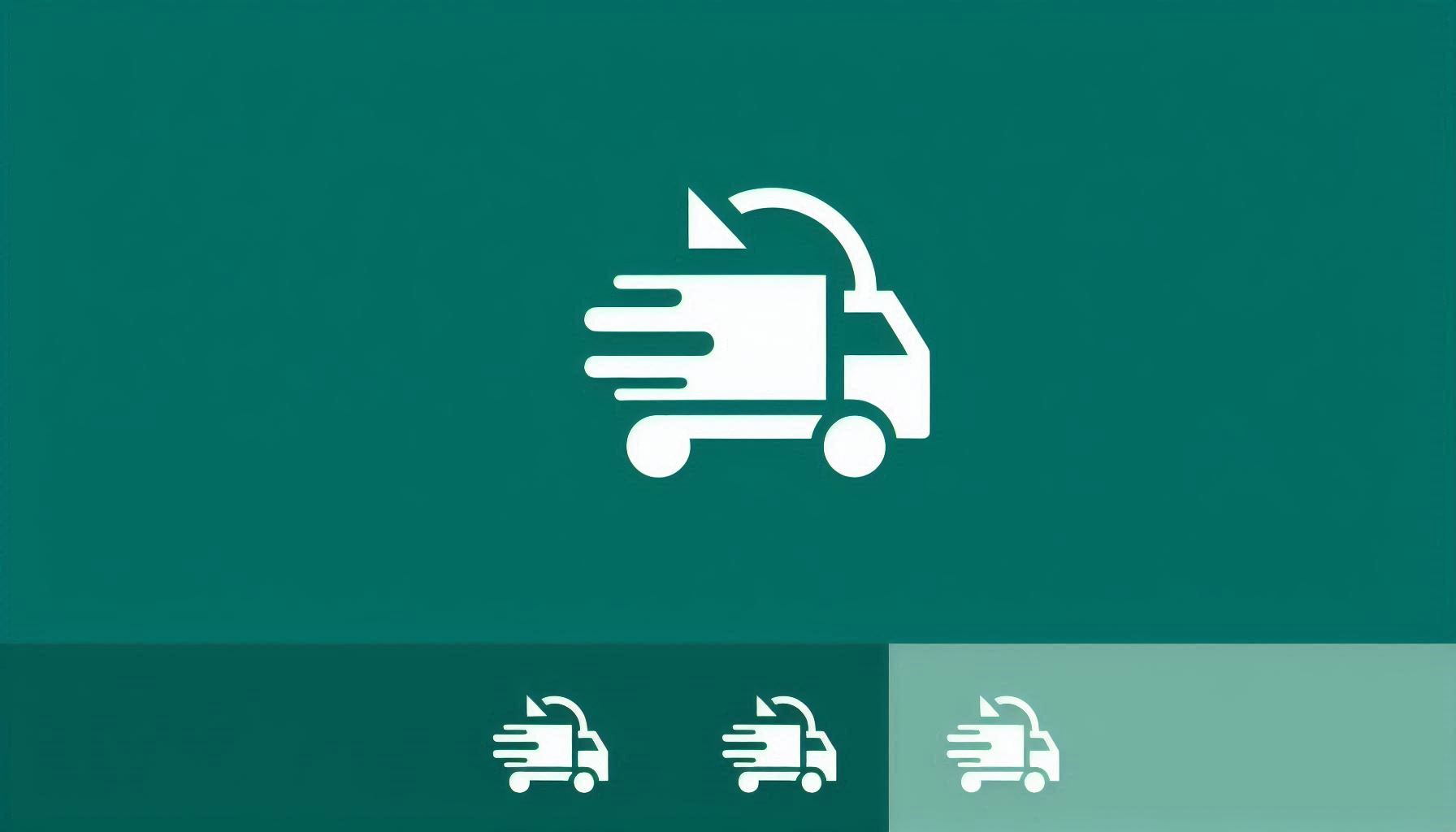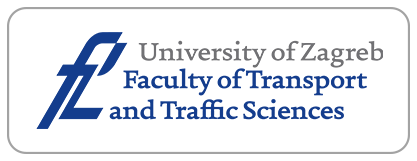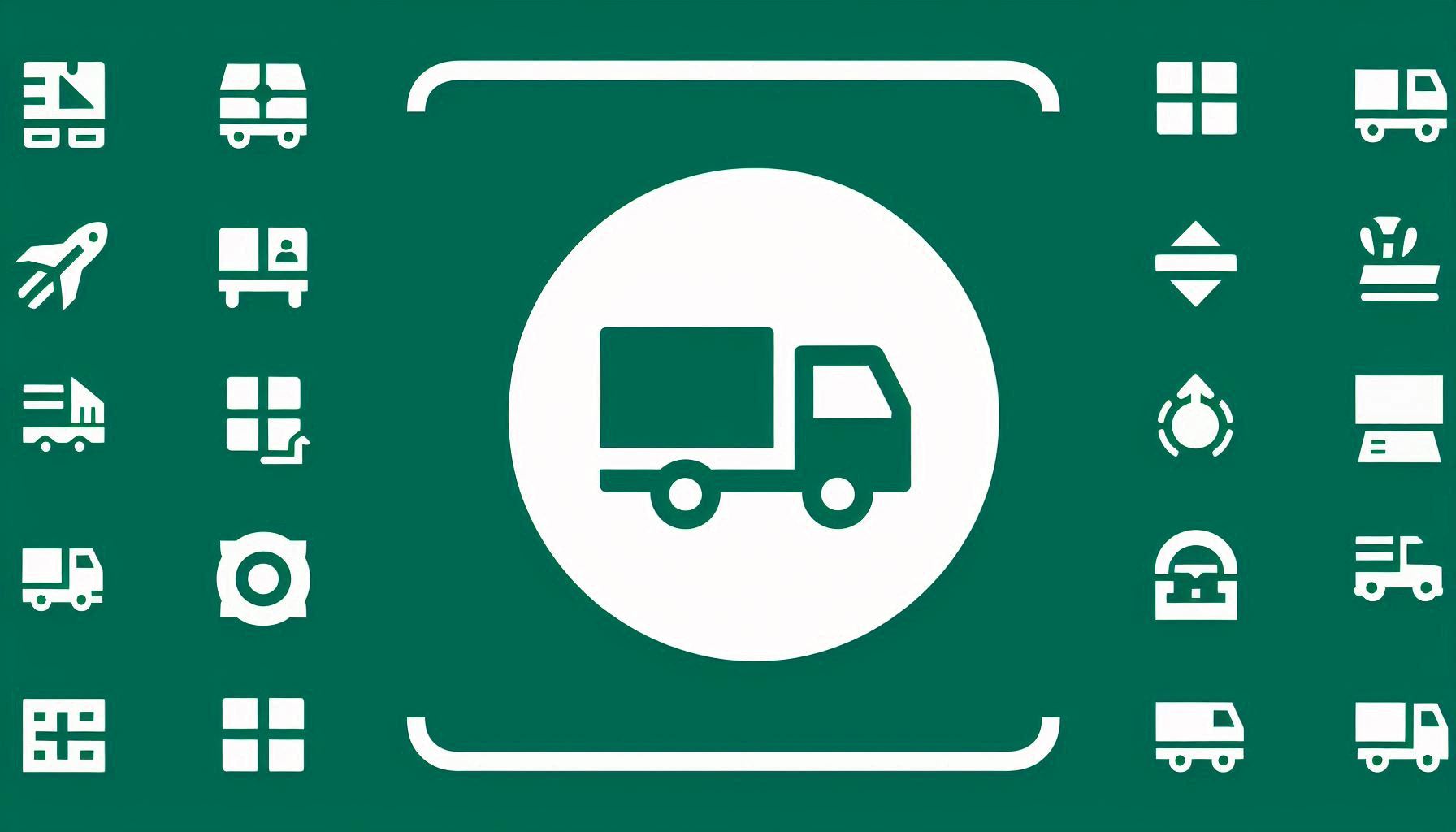The Impact of Digital Economy on the Green Development Efficiency of the Logistics Industry – A Case from China Based on the Mediation Mechanism and Threshold Effect

Downloads
The logistics industry is full of expectations for ‘quality and efficiency’ due to the rapid development of the digital economy (DE). It is worth paying attention to whether the DE can reverse the rough development of the logistics industry and effectively promote the green development efficiency of the logistics industry (GLE). This paper empirically explores the impact of the DE on the GLE using mediation mechanisms and threshold effects, based on China’s inter-provincial panel data from 2011–2021. The empirical results indicate that the development of DE plays a significant role in promoting the GLE and can enhance the GLE through industrial structure upgrading. However, there is a masking effect of the labour productivity of the logistics industry on the impact of the DE on the GLE. The threshold test reveals that there is a threshold effect based on the scale of the logistics industry and the level of scientific and technological innovation in the impact of the DE on the GLE.
Downloads
Qin W, Qi X. Evaluation of green logistics efficiency in Northwest China. Sustainability. 2022;14(11):6848. DOI: 10.3390/su14116848.
Ouyang X, Li Q, Du K. How does environmental regulation promote technological innovations in the industrial sector? Evidence from Chinese provincial panel data. Energy Policy. 2020;139:111310. DOI: 10.1016/j.enpol.2020.111310.
Gan W, Yao W, Huang S. Evaluation of green logistics efficiency in Jiangxi Province based on Three-Stage DEA from the perspective of high-quality development. Sustainability. 2022;14(2):797. DOI: 10.3390/su14020797.
Ma L, et al. Does digitalization make urban development greener? A case from 276 cities in China. Frontiers in Ecology and Evolution. 2023;11:1074827. DOI: 10.3389/fevo.2023.1074827.
Wang X, et al. Digital economy development and urban green innovation ca-pability: Based on Panel data of 274 prefecture-level cities in China. Sustainability. 2022;14(5):2921. DOI: 10.3390/su14052921.
Yan T, Chen Y. The impact of digital economy on high-quality development: Verification based on intermediary model and threshold model. Journal of Economics and Management. 2022.
Wu T, Shao W. How does digital economy drive industrial structure upgrading: An empirical study based on 249 prefecture-level cities in China. PLoS One. 2022;17(11):e0277787. DOI: 10.1371/journal.pone.0277787.
Guo Y, et al. Data-driven coordinated development of the digital economy and logistics industry. Sustainability. 2022;14(14):8963. DOI: 10.3390/su14148963.
Zhang W, et al. A study measuring the degree of integration between the digital economy and logistics industry in China. PLoS One. 2022;17(9):e0274006. DOI: 10.1371/journal.pone.0274006.
Wang L, Wang Q. Eco-efficiency evaluation of integrated transportation hub using super-efficiency EBM model and Tobit regressive analysis–Case study in China. Promet-Traffic&Transportation. 2024;36(2):307-325. DOI: 10.7307/ptt.v36i2.411.
Huang Y. China-Africa joint endeavor on the digital silk road: Opportunities, challenges and approaches. China International Studies. 2019(05):13-28+2.
Lu C. Toward a new era of digital economy. Telecommunications Science. 2018;34(07):1-6. DOI: 10.11959/j.issn.1000−0801.2018220
Chen B, et al. Spatial and temporal evolution of green logistics efficiency in China and analysis of its motivation. Environment, Development and Sustainability. 2024;26(2):2743-2774. DOI: 10.1007/s10668-022-02833-2.
Cao B, Deng L. Influencing factors of logistics industry growth efficiency in Yangtze river economic belt. Economic Geography. 2019;39(7):148-157. DOI: 10.15957/j.cnki.jjdl.2019.07.017.
Lan S, Tseng ML. Coordinated development of metropolitan logistics and economy toward sustainability. Computational Economics. 2018;52(4):1113-1138. DOI: 10.1007/s10614-017-9788-z.
Zhang Y, Wang Y. Logistics industry efficiency evaluation and influencing factors analysis. Statistics and Decision Making. 2018;34(08):109-112. DOI: 10.13546/j.cnki.tjyjc.2018.08.026.
Wang H, et al. Stochastic frontier analysis of logistics efficiency and its influencing factors in provinces along the “belt and road”. Journal of Highway and Transportation Research and Development. 2020;37(10):151-158. DOI: 10. 3969 /j. issn. 1002-0268. 2020. 10. 017.
Liang W, Xu L. Influence of new-type urbanization on the logistics total factor productivity an empirical analysis based on China's provincial capital cities. Journal of North China Electric Power University ( Social Science Edition ). 2018 (02):57-64+94. DOI: 10.14092/j.cnki.cn11-3956/c.2018.02.008.
Zheng W, Xu X, Wang H. Regional logistics efficiency and performance in China along the Belt and Road Initiative: The analysis of integrated DEA and hierarchical regression with carbon constraint. Journal of Cleaner Production. 2020;276:123649. DOI: 10.1016/j.jclepro.2020.123649.
Gong X. Regional logistics efficiency measurement and influencing factors analysis. Statistics and Decision Making. 2022;38(12):112-116. DOI: 10.13546/j.cnki.tjyjc.2022.12.022.
lo Storto C, Evangelista P. Infrastructure efficiency, logistics quality and environmental impact of land logistics systems in the EU: A DEA-based dynamic mapping. Research in Transportation Business & Management. 2023;46:100814. DOI: 10.1016/j.rtbm.2022.100814.
Gong R, Xue J, Liu R. China 's regional logistics efficiency measurement and its spatial and temporal characteristics analysis. Statistics and Decision Making. 2022;38(10):141-145. DOI: 10.13546/j.cnki.tjyjc.2022.10.028.
Momeni E, et al. A new fuzzy network slacks-based DEA model for evaluating performance of supply chains with reverse logistics. Journal of Intelligent & Fuzzy Systems. 2014;27:793-804. DOI: 10.3233/IFS-131037.
Bajec P, Tuljak-Suban D. An integrated analytic hierarchy process—Slack based measure-data envelopment analysis model for evaluating the efficiency of logistics service providers considering undesirable performance criteria. Sustainability. 2019;11(8):2330. DOI: 10.3390/su11082330.
Liu H, et al. Spatial-Temporal pattern and dynamic evolution of logistics efficiency in China's. Quantity Economy, Technology and Economics Research. 2021;38(05):57-74. DOI: 10.13653/j.cnki.jqte.2021.05.005.
Li M, Wang J. Spatial-temporal evolution and influencing factors of total factor productivity in China’s logistics industry under low-carbon constraints. Environmental Science and Pollution Research. 2022;29(1):883-900. DOI: 10.1007/s11356-021-15614-7.
Ye C, et al. Spatial-temporal evolutionary characteristics and its driving mechanisms of China’s logistics industry efficiency under low carbon constraints. Polish Journal of Environmental Studies. 2022;31(6):5405-5417. DOI: 10.15244/pjoes/151602.
Zeng Q. The spatial spillover effect of informatization development on the productivity of logistics industry. China 's circulation economy. 2016;30(09):38-48. DOI: 10.14089/j.cnki.cn11-3664/f.2016.09.006.
Liu Y, et al. Digital Economy development, industrial structure upgrading and green total factor productivity: empirical evidence from China's cities. International Journal of Environmental Research and Public Health. 2022;19(4):2414. DOI: 10.3390/ijerph19042414
Xu X, Zhang M. Research on the scale measurement of China’s digital economy—Based on the perspective of international comparison. China Ind. Econ. 2020;5:23-41. DOI: 10.19581/j.cnki.ciejournal.2020.05.013.
Barefoot K, et al. Defining and measuring the digital economy. US Department of Commerce Bureau of Economic Analysis, Washington, DC. 2018;15:210. https://www.bea.gov/sites/default/files/papers/defining-and-measuring-the-digital-economy.pdf.
Wang J, Zhu J, Luo X. Research on the measurement of China’s digital economy development and the characteristics. Journal of Quantitative & Technological Economics. 2021;38(07):26-42. DOI: 10.13653/j.cnki.jqte.2021.07.002.
Xu Y, Li T. Measuring digital economy in China. National Accounting Review. 2022;4(3):251-272. DOI: 10.3934/NAR.2022015.
Song J, YuXin S. An empirical study on the effect of digital economy on real economy. Science Research Management. 2020;41(5):32. DOI: 10.19571/j.cnki.1000-2995.2020.05.004.
Zhao T, Zhang Z, Liang S. Digital economy, entrepreneurship, and high-quality economic development: Empirical evidence from urban China. Journal of Management World. 2022;36(10):65-76. DOI: 10.19744/j.cnki.11-1235/f.2020.0154.
Zhang C, Liu B, Yang Y. Digital economy and urban innovation level: A quasi-natural experiment from the strategy of “Digital China”. Humanities and Social Sciences Communications. 2024;11(1):574. DOI: 10.1057/s41599-024-03122-1.
Xie X, Wang J. Study on the regional differences and dynamic evolution of the digitalization level of China's logistics industry. The World of Survey and Research. 2023(02):33-46. DOI: 10.13778/j.cnki.11-3705/c.2023.02.004.
Korchagina E, et al. Main logistics digitalization features for business, E3S Web of Conferences. 2020. p. 10023. DOI: 10.1051/e3sconf/202016410023.
Zhang Y. Digital economy, industrial structure upgrading and logistics technology innovation. Logistics Engineering and Management. 2020;42(12):61-64. DOI: 10.3969 /j.issn.1674 -4993. 2020. 012.020.
Lu Y. The impact of digital economy development on logistics efficiency improvement-analysis based on transaction costs. Business Economic Research. 2021(16):99-103.
Salahuddin M, Alam K. Internet usage, electricity consumption and economic growth in Australia: A time series evidence. Telematics and Informatics. 2015;32(4):862-878. DOI: 10.1016/j.tele.2015.04.011.
Li J, Wang Q. Impact of the digital economy on the carbon emissions of China’s logistics industry. Sustainability. 2022;14(14):8641. DOI: 10.3390/su14148641.
Wang C, Guo K. The effect of digital economy empowering high-quality development of green logistics. East China Economic Management. 2024;38(02):53-63. DOI: 10.19629/j.cnki.34-1014/f.230917004.
Lin C, Cui L. Digital economy development, technological innovation and circulation industrial structure upgrading. Business Economic Research. 2023(04):119-122.
Zhao W. The impact of technological innovation on the high-quality development of circulation industry-the mediating effect of logistics efficiency and the moderating effect of environmental regulation. Business Economic Research. 2023(19):29-32.
Yu T, Chen F. The intelligent transformation of circulation in the era of digital economy : characteristics, driving force and realization path. China 's circulation economy. 2020;34(11):33-43. DOI: 10.14089/j.cnki.cn11-3664/f.2020.11.003.
Ding J, Liu B, Shao X. Spatial effects of industrial synergistic agglomeration and regional green development efficiency: Evidence from China. Energy Economics. 2022;112:106156. DOI: 10.1016/j.eneco.2022.106156.
Yu W, et al. Does the digital economy drive low-carbon urban development? The role of transition to sustainability. Frontiers in Ecology and Evolution. 2023;11:1248515. DOI: 10.3389/fevo.2023.1248515.
Xie X, Wang J. Study on the impact of industrial digitization on carbon emissions: evidence from China’s Logistics Industry. Environmental Research Communications. 2023;5(10):105008. DOI: 10.1088/2515-7620/acf918.
Xu C, Qi Y. Measurement and spatial analysis of green development efficiency of regional logistics industry in China. Ecological Economy. 2023;39(04):81-88.
Guo J, Liang S. The impact mechanism of the digital economy on China 's total factor productivity : An uplifting effect or a restraining effect ? Southern economy. 2021(10):9-27. DOI: 10.19592/j.cnki.scje.390281.
Dai K, Huang Z, Wang S. Does the digital economy promote the structural upgrading of the Chinese service industry. Journal of Quantitative & Technological Economics. 2023;40:90-112. DOI: 10.13653/j.cnki.jqte.2023.02.002.
Yang W, Zeng H. Effect evaluation of digital economy promoting total factor productivity. Journal of Technology Economics. 2022;41:1-9.
Zhong K. Does the digital finance revolution validate the Environmental Kuznets Curve? Empirical findings from China. PLoS ONE. 2022;17. DOI: 10.1371/journal.pone.0257498.
Han J, Jiang T. Does the development of the digital economy improve carbon emission efficiency? Frontiers in Ecology and Evolution. 2022;10. DOI: 10.3389/fevo.2022.1031722.
Lyu Y, Gu B, Zhang J. Does digital finance enhance industrial green total factor productivity? Theoretical mechanism and empirical test. Environmental Science and Pollution Research. 2023;30(18):52858-52871. DOI: 10.1007/s11356-023-26057-7.
Guo Q, Ma X. Research on the impact of digital economy on urban green total factor productivity. Modern Management Science. 2022(05):156-166.
Brynjolfsson E, Rock D, Syverson C. Artificial intelligence and the modern productivity paradox. The economics of artificial intelligence: An agenda. 2019;23:23-57. DOI: 10.7208/9780226613475-003.
Yang J, Fu D. The impact of digital economy on labor productivity - An Empirical study based on provincial panel data. Statistics and Decision Making. 2023;39(01):5-10. DOI: 10.13546/j.cnki.tjyjc.2023.01.001.
Hu Y, Guan L. Research on employment creation effect and employment substitution effect of digital economy. Reform. 2022(04):42-54. DOI: 50.1012.F.20220422.1357.004.
Leng J, Liu Y. Research on the threshold effect of industrial agglomeration on logistics efficiency. Prices Monthly. 2019;12:47-54. DOI: 10.14076/j.issn.1006-2025.2019.12.08.
Jin H, Yang J. Can the development of the digital economy unravel the new "Solow paradox"? Industrial Economic Research. 2023(05):101-114. DOI: 10.13269/j.cnki.ier.2023.05.010.
Su Y, Liu Z. Logistics efficiency, technological innovation and the development of modern service industry-Analysis from provincial panel data. Macroeconomic Research. 2022(07):149-162. DOI: 10.16304/j.cnki.11-3952/f.2022.07.010.
Luo R, Wang Q. The impact of China 's urban digital economy on the high-quality development of the logistics industry. city problem. 2022(06):35-46. DOI: 10.13239/j.bjsshkxy.cswt.220604.
Han D, et al. The impact of digital economy on total factor carbon productivity: The threshold effect of technology accumulation. Environmental Science and Pollution Research. 2022;29(37):55691-55706. DOI: 10.1007/s11356-022-19721-x.
Sun G, Li T, Mo Y. The impact of digital economy on China’s agricultural total factor productivity. Economic and Management Review. 2023;39(01):92-103. DOI: 10.13962/j.cnki.37-1486/f.2023.01.008.
Zhang L. Research progress on the energy consumption and carbon emission of China 's logistics industry. Technical Economy and Management Research. 2016(01):119-123.
He J, Wang S, Xu L. Research on the efficiency and influencing factors of green logistics in three bay-area city clusters under the constraint of carbon emissions. Railw. Transp. Econ. 2021;43:30-36. DOI: 10.16668/j.cnki.issn.1003-1421.2021.08.06.
Guo M, Li H, Lin W. The impact of economic growth, FDI, and innovation on environmental efficiency of the logistics industry in provinces along the belt and road in China: An empirical study based on the panel Tobit model. Science Progress. 2021;104(2):00368504211018054. DOI: 10.1177/00368504211018054.
Dai Q. Study on the influence of heterogeneous environmental regulation on green total factor productivity in the logistics industry. Journal of Chongqing University of Arts and Sciences (Social Science Edition). 2020;39(06):63-74. DOI: 10.19493/j.cnki.issn1673-8004.2020.06.007.
Bai W, Sun R, Bai G. Does the development of digital economy improve the total factor productivity of enterprises?-Based on the analysis of A-share listed companies. Economic and Management Review. 2022;38(05):5-19. DOI: 10.13962/j.cnki.37-1486/f.2022.05.001.
Huang K, Wang J. Research on the impact of environmental regulation on total factor energy effect of logistics industry from the perspective of green development. Mathematical Problems in Engineering. 2022;2022:3793093. DOI: 10.1155/2022/3793093.
Li M, Wang J. Spatial-temporal distribution characteristics and driving mechanism of green total factor productivity in China’s logistics industry. Polish Journal of Environmental Studies. 2021;30(1):201-213. DOI: 10.15244/pjoes/121046.
Lei X-q, Yang J-j, Zou J-b et al. Research on the impact of logistics technology progress on employment structure based on DEA-Malmquist method. Mathematical Problems in Engineering. 2020;2020(1):7064897. DOI: 10.1155/2020/7064897.
Copyright (c) 2025 Zhiqiang ZHAO, Lei ZHANG

This work is licensed under a Creative Commons Attribution-NonCommercial 4.0 International License.




















